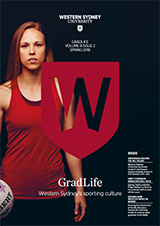More Than Passive Customers: Multicultural Lessons from the Sport Stands
 Sports cheering has been very important for Australian sports fans for the past few months. Along with the year-round calendar of regular sporting events that occupies millions of local supporters, the Rio 2016 Olympic and Paralympic Games kept many Australians up late into the night, supporting their heroes from their lounges or on-the-go as they watched the Olympic live action on their mobile devices.
Sports cheering has been very important for Australian sports fans for the past few months. Along with the year-round calendar of regular sporting events that occupies millions of local supporters, the Rio 2016 Olympic and Paralympic Games kept many Australians up late into the night, supporting their heroes from their lounges or on-the-go as they watched the Olympic live action on their mobile devices.
As usual, the world's largest sporting event wasn't exempt from controversies; on the contrary, event run-downs have shared the headlines with issues such as doping and street violence. Reports from Rio were also filled with political discussions, from women's participation to political demonstrations on the competition grounds and the behaviour of fans.
Boisterous Brazilian and South-American supporters in Rio caught the attention of media and local sports fans, who were fast to label them as 'bad sports' for booing opponents, and also claimed that they were disturbing the competitors with all their noise. Even the IOC's president tweeted about the 'shocking behaviour of the crowd' that booed a French medallist on the podium. He deemed this as 'unacceptable at the Olympics'. On the other hand, Olympian icon Michael Phelps seemed to be truly charmed by the way Brazilian people expressed themselves on the stands. Similarly, less famous competitors such as the Egyptian female beach-volleyball players were grateful for the vocal spectators who cheered them on, despite their weak performances.
It looks like Rio's stands were clearly 'breaking the Olympic etiquette'; the cultural (and political) manifestations of this year's Olympics did not fit the authorities' 'how to support sport' model. What the authorities have been failing to understand, though, is that supporting a team is a cultural construct, and that diverse cultures and diverse people have different ways to enact their passions on the stands. Cheering is part of a sporting culture, entrenched in a specific socio-historical context. Therefore, it would be more efficient for the whole sports industry not to categorise 'non-traditional' supporters as trouble-makers and hence repress and ban them, but rather, to see sport fans as what they really are: culture makers who want not only to consume but also to be part of the sporting atmosphere and create the show themselves. By chanting and using their corporeality, the fans on the stands in Rio were telling the world that they have a culture that needs to be listened to.
Sport fans perform their cultures across the world. There are (multi) cultural lessons to be learned from these performances. People from all ages and cultures are displaying their dreams in a public space; their voices should not be disqualified. Instead, they should be heard and incorporated as a key element of the multiple sporting cultures existing within our communities.
Published in GradLife (opens in a new window), vol. 8, issue 2, Spring 2016.
